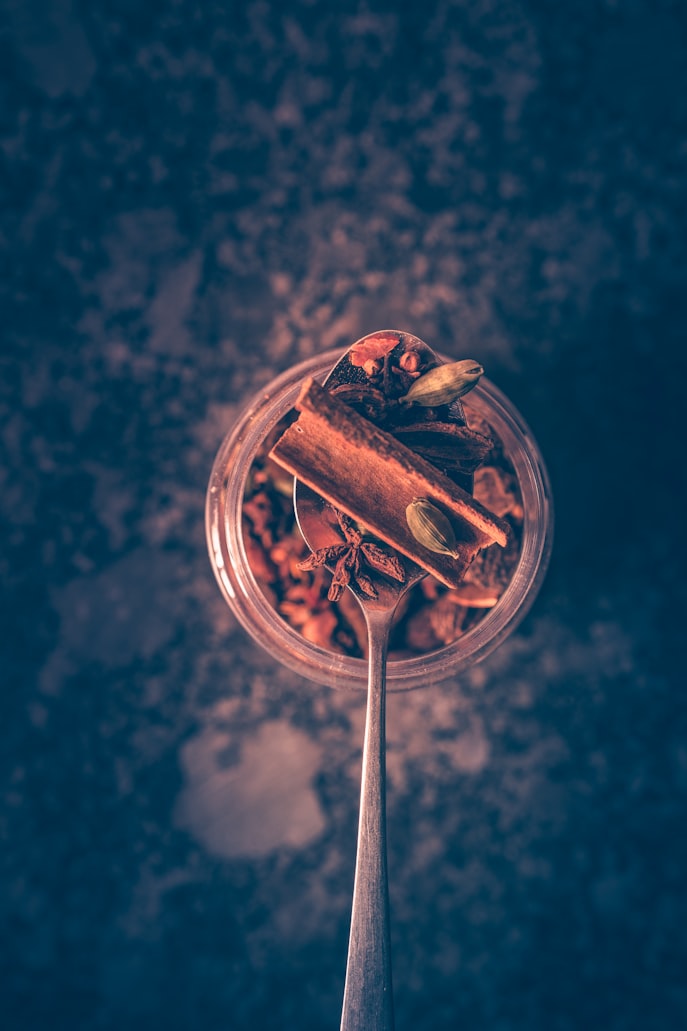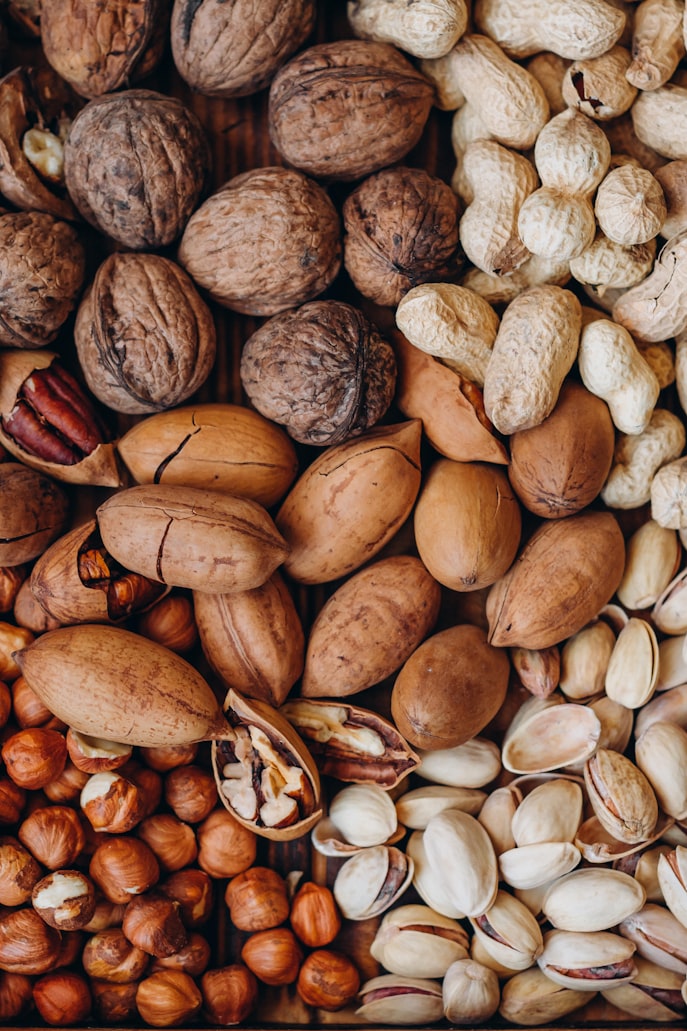There are 3 main causes of wine aromas and flavors:
- Primary Characteristics- from the grape and the fermentation process
- Secondary Characteristics- from post-fermentation winemaking
- Tertiary Characteristics- from maturation
Primary Aromas & Flavors

Primary notes in wine are those that come from either the grape itself or that are created during the magical process of fermentation (i.e. Cabernet Sauvignon with notes of black cherry and blackberry).
Primary notes come in the forms of fruits, flowers, herbs, and minerals.
When discussing white wines, we're mostly looking for (smelling for?):
- Citrus fruits: lemon, lime, grapefruit, etc
- Orchard fruits: apples, pears
- Stone fruits: peaches, nectarines, apricots, etc
- Tropical fruits: pineapple, mango, guava, banana, melon, passion fruit, lychee, etc
- Flowers: white flowers, yellow flowers, purple flowers, etc.
- Minerals: wet stones or slate, crushed rocks, flint, salinity or ocean spray etc.
When analyzing red wines, we're mostly concerned with:
- Red fruits: raspberries, strawberries, cranberries, red cherries, red plums, red currants, etc
- Blue fruits: basically blueberries
- Black fruits: blackberries, black cherries, dark plums, blackcurrants, etc.
- Dried/cooked fruits: raisins, figs, prunes, jams
- Herbs and spices: black/white pepper, liquorice, mint, rosemary, thyme, basil, etc.
- Flowers: in red wines tend to lean towards the purple side like lavender and violets for example (Beaujolais anybody???)
Secondary Aromas & Flavors
Secondary characteristics of wine are created after fermentation. The most obvious of which are extracted from oak. Other secondary notes come from yeast/lees and Maloactic Fermentation (MLF).
- Oak: vanilla, coconut, cloves, nutmeg, cinnamon, butterscotch, toast, cedar, cigar box, charred wood, smoke, cocoa, coffee, resinous notes
- Lees (aka dead yeast cells): dough, biscuit, bread, toast, pastry, brioche, cheese, beer
- MLF: butter, cheese, cream (hellloooo conventional Napa Chardonnay)
Tertiary Aromas & Flavors
Tertiary notes in wine originate in the aging process. They can develop from an oxidative maturation environment like oak barrels or concrete tanks. Tertiary wine aromas/flavors can also come from bottle aging where the wine is protected from oxygen. Regardless of barrel age or bottle age, the primary fresh fruit character we discussed with primary aromas will transform into dried or cooked fruit as the wine ages.
- Intentional oxidation (barrel aging) before bottling: nutty profile, almonds, walnuts, hazelnuts, marzipan, caramel, toffee, coffee, cocoa, caramel
- White wine fruit development: dried apricot, marmalade, dried apple, dried banana, etc.
- Red wine fruit development: raisin, fig, prune, dried blackberry, dried cranberry, etc. baked blackberry, baked blueberry, etc.
- White wine bottle age: petrol, kerosene, honey, ginger, cinnamon, nutmeg, general nuttiness, mushroom, hay
- Red wine bottle age: leather, forest floor, earth, mushroom, game, tobacco, vegetal, wet leaves, savory, meaty, farmyard
If you want to learn more check out the WSET Systematic Approach to Tasting (SAT) >> CLICK HERE
Are natural wine aromas different?
Primary Aromas & Natural Wine
As far as primary aromas go, there's not much of a difference between natural wines and their conventional counterparts. However, one could argue that the primary aromas are more pronounced since the farming is superior and therefore the fruit itself is higher quality. One could also counter that argument saying that natty winemakers are making f*cked up wine with gross aromas. And that is true in some instances. This is why you need to know which producers to follow into battle. This is also why I personally consider natural wine and natty wine to be two different subcategories.
Secondary Aromas & Natural Wine
Secondary aromas are really where you'll start to see a difference! Why? Mostly because of the lack of new oak. Low intervention winemaking is all about letting the grape variety and vineyards site do the talking (tasting?). So within the natural wine community, use of new oak is generally frowned upon, as it can take over the wine and mask all those pretty primary characteristics. However, old neutral oak barrels, concrete vessels, and clay vats do allow for some oxygenation which impart subtle secondary character.
MLF or Malo is more common in natural white wines (all red wines undergo MLF) because when they are left to their own devices, Lactic Acid Bacteria (LAB) will take over once the yeasts have finished the alcoholic fermentation. Conventional winemakers will block malo by...
- Chilling the wine
- Filtering out LAB
- Kill the LAB with excessive sulfite additions
These are all interventions. Natural vignerons practice a "hands-off" approach in the cellar and practice minimal intervention, They let nature take its course, rely on impeccable farming, and allow their high-quality fruit to take the lead.
Tertiary Aromas and Natural Wine
The main thing to think of here, is that natural wine's may age more quickly in some instances. Why? Lack of preservatives. Low-intervention winemakers are relying on the natural preservatives present in the wine: alcohol, acidity, tannins, and (naturally occurring) sulfites. So a wine from a dogmatic "zero-zero" producer will most likely develop tertiary characteristics quickly compared to a hyper-conventional winery on the opposite side of the spectrum. And everything else in between.
There's times that I love that natural wine develops more quickly because the complexity peaks sooner and you don't need to wait decades for those tertiary notes to pop. Sometimes it only takes 5 years of bottle age for that nutty marzipan in a crisp white wine to shine through! So you get the best of both worlds... fresh and zippy, yet dried, cooked, and nutty. Many natural wines will drink in their prime in less than a decade, which is awesome!
Quick Rant on Oak:
Oak is like makeup. If you use it subtly/moderately on someone who already has a pretty face, they look even more beautiful. If you aggressively cake it onto that same pretty face, they might look like a scary-ass clown. Yes, an ass clown. If you put lipstick on a pig, well, you still have a pig. Oink oink, y'all.
Oceans of conventional wineries mask their crappy fruit quality with way too much oak. This heavily oaked "style" (or should I say lack there of), gets good scores from critics that baby boomers love. You ever drink the "premium" cabernet that your uncle is pouring and think to yourself, "Man, this tastes like I'm rolling a blackberry blunt" ??? Maybe it's just me.


